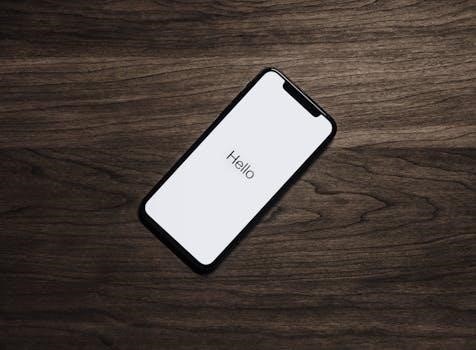Hunter ICC2 Manual⁚ A Comprehensive Guide
Welcome to the comprehensive guide for the Hunter ICC2 Irrigation Controller․ This manual offers detailed instructions and information to help you effectively manage your irrigation system․ From initial programming to troubleshooting, this guide covers all aspects of the ICC2 controller, ensuring optimal performance and water conservation․

The Hunter ICC2 Irrigation Controller is a versatile and user-friendly solution designed for both residential and commercial applications․ Building upon the legacy of its predecessor, the ICC, the ICC2 offers enhanced features and capabilities to manage larger and more complex irrigation systems․ With the capacity to control up to 54 stations, it is well-suited for expansive landscapes requiring precise water management․
This controller boasts a convenient backlit display, ensuring visibility in various lighting conditions, and supports multiple languages for user interface customization․ Its modular design allows for easy expansion and adaptation to changing irrigation needs․ The ICC2 is engineered for simple programming, a hallmark of Hunter products, making it accessible for users of all skill levels․ The controller is housed in a durable, weather-resistant enclosure designed for outdoor wall mounting, and is pre-wired for remote control capabilities using the Hunter ROAM system․
The ICC2 is an ideal choice for those seeking a reliable and efficient irrigation management solution, combining ease of use with advanced functionality to optimize water usage and maintain healthy landscapes․
Key Features of the Hunter ICC2
The Hunter ICC2 Irrigation Controller comes equipped with a range of features designed to enhance irrigation management․ Its modular design allows for scalability, supporting up to 54 stations, making it suitable for both residential and commercial landscapes․ The controller features a user-friendly interface with a backlit display, ensuring clear visibility in all lighting conditions, and supports multiple languages for added convenience․
Water-saving capabilities are enhanced through compatibility with the Hunter Solar Sync sensor, which automatically adjusts watering schedules based on local weather conditions․ The ICC2 also includes a rain sensor bypass switch, allowing users to override the sensor and enable watering as scheduled․ For advanced control, the controller integrates with the Centralus platform via Wi-Fi, LAN, or LTE cellular connection, enabling remote monitoring and management․
Additional features include programmable start times, station run times, and water days, providing flexibility in scheduling irrigation․ The ICC2 is pre-wired for remote control using the Hunter ROAM system․ A one-touch manual start option allows for immediate watering of a single station․ These features combine to offer a comprehensive and efficient irrigation solution․
Hunter ICC2 Programming Instructions⁚ A Step-by-Step Guide
Programming the Hunter ICC2 Irrigation Controller involves several key steps to ensure efficient and effective watering․ First, set the current date and time using the controller’s interface to ensure accurate scheduling․ Next, define start times for your programs, specifying the time of day each program should begin watering․ The ICC2 allows for multiple start times to accommodate different watering needs․

Then, set the run times for each station, determining how long each zone will be watered․ This can be adjusted based on plant type, soil conditions, and sprinkler type․ Select the water days for each program, choosing specific days of the week or using odd, even, or interval day programming․ The ICC2 offers flexible scheduling options to meet various irrigation requirements․

Consider integrating the Hunter Solar Sync sensor for automatic seasonal adjustment based on local weather data․ To manually operate stations, turn the dial to the “Manual” position and select the desired station․ Save your settings and run a test cycle to ensure everything is programmed correctly․ This step-by-step approach simplifies the programming process, maximizing the benefits of the ICC2 controller․
Manual Operation of Stations
The Hunter ICC2 Irrigation Controller allows for easy manual operation of stations, providing flexibility when you need to water specific zones outside of the regular schedule․ To initiate manual watering, turn the dial to the “Manual” position․ This activates the manual mode, allowing you to select individual stations to operate․
Once in manual mode, use the “+” or “-” buttons to scroll through the available stations․ The controller display will show the station number and any associated name or description you’ve programmed․ When you’ve selected the desired station, press the “Enter” button to begin watering․ The station will run for a default time, or you can adjust the duration using the “+” or “-” buttons․
During manual operation, the display shows the remaining watering time․ To stop a manually operated station, press the “Stop” button․ This immediately halts watering for that station․ You can also use the “Manual All Stations” option to water all stations sequentially, each for a set duration․ This feature is useful for system testing or when seasonal adjustments are needed․ Manual operation provides convenient control over your irrigation system․
Rain Sensor Bypass Functionality
The Hunter ICC2 Irrigation Controller includes a rain sensor bypass functionality, which allows you to override the rain sensor’s input when necessary․ This feature is useful when you want to ensure irrigation occurs despite recent rainfall or sensor activation․ The bypass switch enables scheduled watering, even if the rain sensor detects sufficient moisture and is actively preventing normal operation․
To activate the rain sensor bypass, locate the bypass switch on the controller․ The switch typically has two positions⁚ “Active” and “Bypass․” When the switch is set to “Bypass,” the controller disregards the rain sensor’s input and follows the programmed watering schedule․ This setting ensures that irrigation occurs as scheduled, regardless of the rain sensor’s status;
When the switch is set to “Active,” the controller respects the rain sensor’s input․ If the rain sensor detects adequate moisture, it will interrupt the watering schedule, preventing unnecessary irrigation․ Use the bypass function judiciously, as overriding the rain sensor can lead to overwatering if not monitored carefully․ It provides flexibility to manage irrigation according to specific needs․
Seasonal Adjustment with Solar Sync
The Hunter ICC2 controller offers advanced seasonal adjustment capabilities through its compatibility with the Solar Sync sensor․ Solar Sync is an optional sensor that automatically adjusts the controller’s watering schedule based on real-time weather data, optimizing water usage and promoting plant health․ This system eliminates the need for manual adjustments, ensuring efficient irrigation throughout the year․
To enable Solar Sync, connect the sensor to the ICC2 controller following the instructions in the Solar Sync manual․ Once connected, navigate to the Solar Sync settings on the controller’s display․ Here, you can configure the region settings, which determine how the controller interprets weather data․ The ICC2 controller supports multiple regions, allowing for precise adjustments based on local conditions․
The Solar Sync feature adjusts watering durations based on evapotranspiration (ET), a measure of how much water plants lose to evaporation and transpiration․ By monitoring ET, the controller dynamically modifies watering schedules to match plants’ actual needs․ This leads to significant water savings and prevents over or under-watering․ The Solar Sync sensor enhances the ICC2’s ability to maintain optimal irrigation, adapting to changing environmental conditions effortlessly․
Troubleshooting Common Issues
The Hunter ICC2 irrigation controller is generally reliable, but occasional issues may arise․ One common problem is an “ERR” message on the display, often accompanied by a number․ This typically indicates a short circuit in the field wiring or a faulty solenoid․ To resolve this, inspect the wiring and solenoid connections for damage or corrosion․ Pressing any button usually clears the error message temporarily․
Another issue is a “P ERR” message, which signals a problem with the pump or master valve wiring or solenoid․ Check these connections similarly to resolve the issue․ If stations fail to water as scheduled, verify that the start times, run times, and water days are correctly programmed․ Also, ensure that the rain sensor bypass switch is not enabled unintentionally․
If the display is blank, check the power supply and ensure the controller is receiving adequate power․ If using a wireless valve link system, ensure the signal strength is sufficient and that the transmitter and receiver are properly paired․ Regularly inspect and clean the controller and its components to prevent malfunctions․ Consulting the full user manual provides further guidance on specific error codes and their solutions․
Centralus Platform Integration
The Hunter ICC2 controller offers seamless integration with the Centralus platform, providing advanced remote management and monitoring capabilities․ Centralus allows users to control and monitor their irrigation systems from anywhere with an internet connection, enhancing efficiency and responsiveness․
The ICC2 controller connects to Centralus through various communication methods, including Wi-Fi, Local Area Network (LAN), or LTE cellular connection via the Cell-Kit module․ This module ensures a stable and reliable connection, enabling real-time data transmission and remote adjustments․
With Centralus, users can access detailed reports on water usage, flow rates, and system performance, allowing for data-driven decisions to optimize irrigation schedules and conserve water․ The platform also facilitates remote diagnostics, enabling quick identification and resolution of potential issues before they escalate․ Setting up the Centralus integration involves configuring the network settings on the ICC2 controller and associating it with a Centralus account․ The intuitive interface simplifies this process, ensuring a smooth transition to remote management and control․
Wireless Valve Link System
The Hunter ICC2 Wireless Valve Link (WVL) system provides a convenient solution for irrigation setups where direct wiring to valves is challenging or cost-prohibitive․ This system allows for wireless communication between the ICC2 controller and remote valves, eliminating the need for extensive trenching and wiring․
The WVL system consists of a Wireless Valve Output Module (WVOM) connected to the ICC2 controller and Wireless Valve Links (WVL-100 or WVL-200) installed near the valves․ These components communicate wirelessly, enabling the controller to activate and deactivate valves remotely․ The system supports a range of up to 2,000 feet line-of-sight, offering flexibility in system design and installation․ Setting up the WVL system involves pairing the WVOM with the WVL units and configuring the valve assignments within the ICC2 controller interface․ The system is designed for easy installation and is waterproof, ensuring reliable performance in outdoor environments․

By using the Wireless Valve Link system, users can expand their irrigation coverage without the limitations of traditional wiring, making it ideal for large properties or areas with obstacles․
Hunter ICC2 Controller Models
The Hunter ICC2 irrigation controller is available in several models to accommodate various irrigation needs, ranging from residential to light-commercial applications․ These models differ primarily in the number of stations they support, offering flexibility in system design and scalability․
The base model, such as the I2C-800-PL, typically starts with 8 stations and can be expanded using modular components․ These modules allow users to increase the station capacity as needed, providing a cost-effective solution for growing irrigation systems․ The ICC2 controller is designed with both plastic outdoor enclosures (PL) and metal outdoor enclosures (M), providing protection from the elements․ Some models also offer additional features or configurations tailored to specific requirements․
Choosing the appropriate ICC2 model depends on the current and future needs of the irrigation system․ Consider the number of zones to be controlled and the potential for expansion when selecting a model․ Each model maintains the core ICC2 functionalities, including advanced programming options, Solar Sync compatibility, and Centralus platform integration, ensuring consistent performance across the range․
Maintenance and Care
Proper maintenance and care are crucial for ensuring the longevity and optimal performance of your Hunter ICC2 irrigation controller․ Regular inspections and preventative measures can help avoid common issues and extend the controller’s lifespan․
Periodically inspect the controller’s wiring for any signs of damage or corrosion․ Ensure that all connections are secure and free from debris․ Clean the controller’s enclosure regularly to prevent the buildup of dirt and moisture, which can affect its functionality․ Check the backup battery to ensure it is functioning correctly, replacing it as needed to prevent data loss during power outages․
During periods of inactivity, such as winter months, consider disconnecting the controller from the power source to protect it from power surges․ Store the controller in a dry, sheltered location if possible․ Regularly update the controller’s firmware to benefit from the latest features and improvements․ By following these maintenance and care guidelines, you can keep your Hunter ICC2 controller in excellent condition for years to come․



